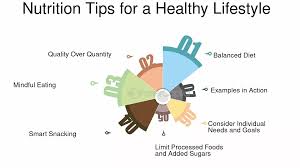Achieving a healthier lifestyle often begins with understanding what your body needs to function at its best. One of the cornerstones of optimal health is balancing macronutrients – the carbohydrates, proteins, and fats that provide energy and support various bodily functions. Mastering this balance can lead to improved energy levels, enhanced fitness outcomes, and long-term well-being.
In this article, we will explore the concept of macronutrient balance, provide actionable tips to optimize your intake, and explain how this practice can transform your health.
What Are Macronutrients?
The Big Three: Carbohydrates, Proteins, and Fats
Macronutrients are nutrients that the body requires in large amounts to maintain energy and support vital functions. Each plays a unique role:
- Carbohydrates – The body’s primary source of energy. Foods like fruits, vegetables, grains, and legumes are rich in carbohydrates.
- Proteins – Essential for building and repairing tissues, enzymes, and hormones. Found in meat, fish, dairy, beans, and nuts.
- Fats – Provide energy, support cell structure, and assist in nutrient absorption. Healthy fats include avocados, nuts, seeds, and olive oil.
Balancing these macronutrients according to your specific needs is crucial for maintaining overall health.
Why Balance Matters
An imbalance in macronutrient intake can lead to various health issues, such as:
- Low energy levels
- Poor digestion
- Weight gain or muscle loss
- Increased risk of chronic diseases
Balancing your macronutrients ensures your body gets the right fuel for daily activities, recovery, and long-term vitality.
How to Determine Your Macronutrient Needs
Factors to Consider
- Age – Nutritional requirements change over time.
- Activity Level – Athletes and active individuals may need more protein and carbohydrates.
- Health Goals – Goals such as weight loss, muscle gain, or improved energy levels influence macronutrient distribution.
- Metabolism – Some people naturally burn calories faster than others.
Macronutrient Ratios
The ideal macronutrient ratio varies from person to person, but common recommendations are:
- Weight Maintenance: 40% carbohydrates, 30% protein, 30% fat
- Weight Loss: 30% carbohydrates, 40% protein, 30% fat
- Muscle Gain: 50% carbohydrates, 25% protein, 25% fat
Use tools like calorie calculators or consult a nutritionist to personalize your macronutrient targets.

Tips for Balancing Macronutrients
1. Track Your Intake
Start by tracking your daily food intake using apps like MyFitnessPal or Cronometer. These tools help you identify patterns and adjust your diet accordingly.
2. Focus on Quality
Not all macronutrients are created equal. Prioritize whole, unprocessed foods over refined and sugary options:
- Choose complex carbohydrates like quinoa, oats, and sweet potatoes.
- Opt for lean protein sources like chicken, turkey, tofu, and fish.
- Incorporate healthy fats from nuts, seeds, and oils like flaxseed and olive oil.
3. Meal Planning
Planning meals in advance can help you balance macronutrients effortlessly. Aim for:
- Breakfast: High in protein and healthy fats to stabilize blood sugar.
- Lunch: Balanced with carbohydrates, protein, and fiber to sustain energy.
- Dinner: Lighter on carbs, focusing on protein and fats to aid recovery.
4. Portion Control
Understand portion sizes to avoid overconsumption. Use your hand as a guide:
- A palm-sized portion of protein
- A fist-sized portion of carbohydrates
- A thumb-sized portion of fats
5. Hydration and Macronutrients
Staying hydrated is essential for optimal digestion and nutrient absorption. Aim to drink at least 8 glasses of water daily and adjust according to activity levels.
6. Regular Adjustments
Your macronutrient needs may change with your lifestyle, fitness goals, or health conditions. Reassess your needs periodically and make necessary adjustments.
Benefits of Balancing Macronutrients
Balancing macronutrients has numerous benefits, including:
- Stable Energy Levels: Avoid energy crashes and stay productive throughout the day.
- Better Weight Management: Prevent weight gain or support weight loss.
- Improved Digestion: Minimize bloating and discomfort.
- Enhanced Fitness Performance: Fuel workouts and support recovery.
- Reduced Disease Risk: Lower the likelihood of developing chronic conditions like diabetes and heart disease.
Common Mistakes and How to Avoid Them
- Skipping Macronutrients Avoid diets that completely eliminate a macronutrient (e.g., fat-free or carb-free diets). Each macronutrient serves an essential purpose.
- Overeating Healthy Foods Even healthy options like nuts and avocados can contribute to weight gain if consumed in excess.
- Neglecting Fiber High-fiber foods support digestion and help you feel full longer.
FAQ: Balancing Macronutrients
What are the signs of a macronutrient imbalance?
Common signs include fatigue, poor concentration, weight fluctuations, and digestive issues.
Can I balance macronutrients on a vegetarian or vegan diet?
Absolutely! Plant-based diets can provide sufficient macronutrients through legumes, grains, nuts, seeds, and plant-based oils.
How often should I adjust my macronutrient intake?
Reassess your needs every few months or when you experience significant changes in activity level, health goals, or body composition.
Are there risks to focusing too much on macronutrients?
Over-focusing can lead to stress or neglect of micronutrients (vitamins and minerals). Balance both for overall health.
Conclusion
Balancing macronutrients is a foundational aspect of a healthier lifestyle. By understanding your body’s unique needs and making informed dietary choices, you can achieve greater energy, better health outcomes, and a more fulfilling life. Begin your journey today by tracking your intake, prioritizing quality foods, and making gradual adjustments to your diet.
Discover how balancing macronutrients can transform your health. Learn actionable tips for optimal energy, weight management, and a healthier lifestyle. Start today!